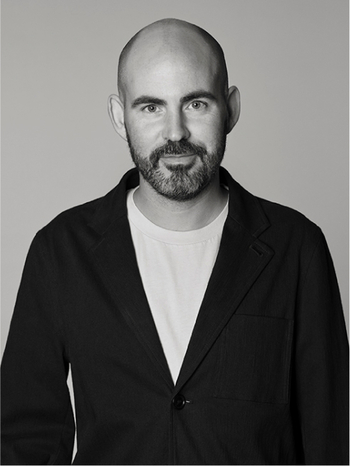Gaetano Pesce
a "Golgotha" chair, Bracciodiferro, Italy, 1972.
Resin soaked Dacron and fiberglass cloth, stamped with manufacturer's mark Sedia Golgotha Dis. Gaetano Pesce Prodotta Da Bracciodiferro S.R.L. Genova Italia. Height 99.5 cm, seat height 46 cm.
This work is from a limited and diversified series; around thirty chairs are believed to have been produced, and no two are alike.
Wear and superficial damage.
Provenance
Alessandro Mendini, Italy.
Galleria Colombari, Milan.
Private Collection, France.
Wright, Chicago, Utopia: Lost and Found, 1 April 2008, lot 810.
Private Collection, Europe.
Sotheby's, Paris, Arts Decoratifs Du Xxe Siecle & Design Contemporain (PF1204), 6 June 2012, lot 132.
Private Collection, Sweden. Acquired at the above sale.
Literature
France Vanlaethem, "Gaetano Pesce: Architecture, Design, Art", Rizzoli 1989, compare p. 60.
Glenn Adamson & Gaetano Pesce, "Gaetano Pesce: The Complete Incoherence", The Monacelli Press 2022, compare pp. 94-95 and 100-101.
More information
With a deep-rooted curiosity to explore new methods and materials, the Italian Gaetano Pesce stood out as a true design pioneer. The Golgotha chair was part of a series of ground-breaking, conceptual works, on the border between art and design, which were presented in 1972. The suite belongs to one of Pesce's first experiments that fully realized the idea of mass-produced uniques - or series of originals - as he himself called it. Pesce wanted to move away from smooth, modernist serial production and instead focus on unique objects.
Golgotha is a limited and diversified series; around thirty chairs are believed to have been produced, and no two are alike. In addition to the chairs, the suite also included a diamond-shaped and a trapezoidal table in two different sizes. The suite refers to the site immediately outside Jerusalem's walls where, according to Christianity's four canonical gospels, Jesus was crucified. The chairs allude to the Shroud of Turin - the burial shroud used to wrap the body of Jesus - and the table to the Church of the Holy Sepulcher where Jesus is said to have risen from the dead. The theme was intended to remind us of the sacramental value that objects had in traditional society, where every table was ultimately an altar, every chair a throne and every meal a realization of the Eucharist, an opening to the transcendental. The present chair has a significant provenance in the form of the architect and designer Alessandro Mendini, friend and colleague of Pesce. Thence through the Galleria Colombari in Milan and via auction houses, ultimately ending up in a private collection in Sweden.
The Golgotha suite was the first project launched under the Bracciodiferro brand – a sister company to the market-leading Italian furniture company Cassina. The company was founded in 1970 with the ambition to give Pesce an artistic sanctuary. Cassina saw Pesce's greatness, but the objects and projects were considered too radical to market under the company name.
With the Golgotha suite, Pesce began an exploration of a new material, resin, which is a type of liquid plastic that hardens and becomes solid. The revolutionary method enabled serial production where all items become unique. The chair is made by hand from a fiberglass-reinforced fabric, which is soaked with resin. The backrest got its shape by being hung on a line below the seat and placed on a 45-centimeter-high cube. Before the blank fully hardened, a person had to sit on it to shape it. Thus, no two chairs were alike. Unique products were of the time and broke with the modernist view of industrially produced design. The project is the basis for a large part of Pesce's continued artistry and later works such as the objects for Fish Design and the furniture in the "Nobody's perfect" series.
The Golgotha suite testifies to Pesce's greatness as a creator and inspirer within the postmodern design movement. Chairs from the suite can be found in the collections of several important institutions, such as the Museum of Modern Art in New York.
Designer
Gaetano Pesce was an Italian architect and designer who can undoubtedly be considered one of the most influential figures in the postmodern design movement. Through his groundbreaking approach and irresistible desire to break away from the strict ideals of modernism, Pesce shaped a new direction in design and architecture, where individuality and human emotion took centre stage. Pesce’s legacy lives on, not only through his groundbreaking works but also through the significant impact he has had on generations of young designers, who continue to be inspired by his courage to challenge norms and push the boundaries of what design can be.
Read more






















































































































